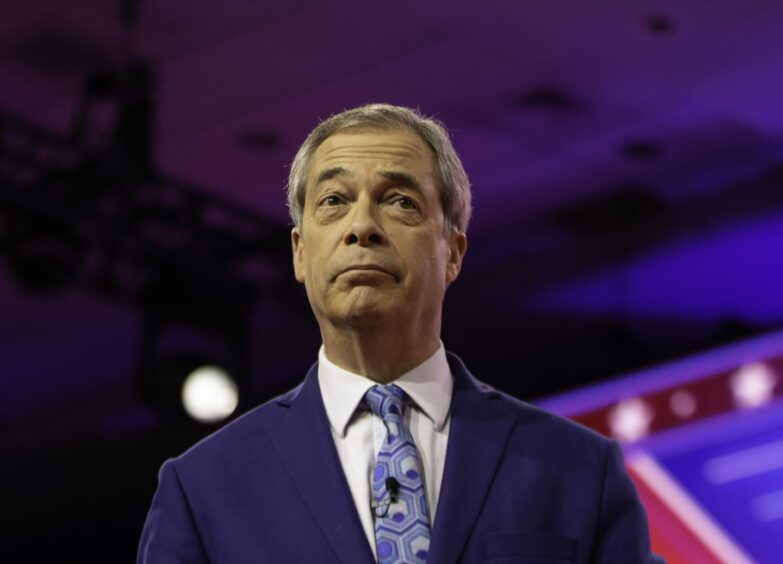Neither party will thank me for pointing this out, but there are currently many parallels between the Conservatives at Westminster and the SNP at Holyrood.
Both have been in power for an awful long time: a child born on the day the Tories took over at Number 10 will be halfway through high school now; a child born on the day the SNP came to power might have left school already.
Both have recently undergone tumultuous leadership contests, with Nicola Sturgeon and Boris Johnson stepping down amidst scandal.
Their replacements have found themselves engaged in daily battles to maintain party discipline, leaving little capacity for governance.
Both parties are consumed by short-term tactics, despite superficial talk of focusing on the long-term or getting on with the day job.
There is very little sign of “the vision thing”, as George H.W. Bush once memorably called it.
With Sunak, there appears to be no aspiration beyond holding the office of PM.
‘No one will talk of Sunakism ten years from now’
It seems unlikely people will talk of ‘Sunakism’ ten years from now, for there will be nothing to pin it on. Yousaf is no different.
He might claim that his big strategic aim – breaking up the UK – is there and that it is clear, but does anybody really believe he will achieve this? I doubt he believes it himself.
He goes through the SNP populist motions of grievance-mongering and framing opponents as anti-democrats and so on, but the vacant look in his eyes suggests his heart isn’t in it.
Personal rather than national ambition appears to be the defining mission of both governments.
Preposterously, Sunak is trying to present himself as an insurgent offering a fresh start. The SNP tried the same tactic in the Rutherglen by-election. It stretches credulity.
The prime minister and first minister spend political capital shoring up the more extreme elements of their bases.
Witness Nigel Farage’s presence at the recent Conservative party conference and Sunak’s refusal to rule out welcoming him back into the fold.
Meanwhile, Yousaf sets out increasingly outlandish plans to deliver a split from the UK, the latest of which is that he will seek independence negotiations on the back of the SNP winning the most seats in Scotland at the next general election.
Both parties rely on culture war narratives to stir up emotions and drive support. In the case of the Tories, this involves taking a scattergun approach, latching on to anything and everything flagged as vaguely ‘woke’, including climate change.
In the case of the SNP, and as I wrote last month, this involves stoking a national identity culture war.
The result of all this dysfunction is bad governance. Yousaf is busy putting out pointless papers on independence even though polling of our main priorities shows that healthcare, the economy and education are at the front of people’s minds, with ‘whether or not Scotland becomes independent’ sitting seventh on Scotland’s list of priorities.
Meanwhile, Scottish drug deaths remain by far the highest in Europe, children in Scottish schools are not being educated as well as those in the rest of Britain, hundreds of thousands of Scots are on NHS waiting lists, and Scotland’s islanders are still waiting on new lifeline ferries.
Cancellation of HS2 was to benefit the northern cities
Sunak has just cancelled the Manchester leg of HS2, the new high-speed railway. The connection to the northern cities was set to be the most beneficial part of the project.
This can only be bad for the economy. And in a little-reported but important development, it has emerged that Sunak’s weakening of UK climate targets has left British exporters facing hundreds of millions of pounds in EU carbon border taxes within the decade – taxes that should flow to the Treasury.
The great strength of established democracies is their ability to self-correct when they wander off the right path. When we hear Humza Yousaf put forward his latest farcical plan to fracture the UK or observe the downright weirdness of the recent Tory conference, it is easy to be despondent about our country. But moderates need not fret too much. Liberal democracy will ultimately prevail. We will be pulled back onto the right path.
The Conservatives will almost certainly be out of power soon enough, perhaps by this time next year. The pushing of culture war narratives and conspiracy theories will be rejected. Suella Braverman and her vile Tory conference speech is set to be a very small footnote in British politics.
With that lot gone, it is clear what the next stage of Britain’s great moderation must be: voting the SNP and Greens out of power at Holyrood in 2026.
We can all see the dysfunction in both Scotland’s parties of government. We all know how damaging it is. More of us are coming to the realisation both need to go.
John Ferry is a regular commentator on Scottish politics and economics, a contributor to think tank These Islands, and finance spokesperson for the Scottish Liberal Democrats


Conversation